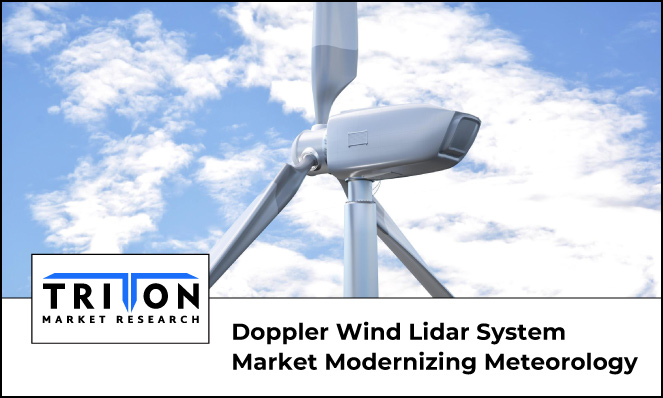



19, April 2024

Doppler Wind Lidar Systems (DWL) are critical in providing precise, real-time data on wind patterns, which is essential for numerous sectors, including aviation, meteorology, and renewable energy. Due to the higher accuracy and ability to cover large, often remote areas, the demand for Doppler wind lidar systems continues to surge. Analyzing this demand potential, our research predicts that the Doppler Wind Lidar Systems Market is set to advance at a CAGR of 6.52% over the forecasting period 2024-2032.
Doppler radar manufacturers utilize laser beams to detect the Doppler wind speed and direction at various altitudes, offering a clear advantage over traditional anemometers and radar-based systems. The rise in extreme weather events emphasizes the urgency for advanced weather prediction tools. Hence, the wind lidar market is expanding as these benefits become more recognized.
Explore in detail about this market in our FREE sample
Photonics Innovations: Solid-state lasers with higher output powers and narrower line widths are developed, enabling longer measurement ranges and better signal-to-noise ratios. Additionally, the development of high-efficiency photodetectors has enhanced the sensitivity and dynamic range of DWL systems.
Advanced Signal Processing Algorithms: Advances in signal processing algorithms have improved the accuracy and reliability of DWL measurements, especially in challenging atmospheric conditions such as turbulence and aerosol contamination. These algorithms employ techniques such as spectral analysis, adaptive filtering, and machine learning to extract wind velocity information from noisy lidar signals more effectively.
Multi-Wavelength Lidar Systems: Multi-wavelength DWL systems are developed to overcome limitations associated with single-wavelength lidars. By emitting laser pulses at multiple wavelengths simultaneously or sequentially, these systems can retrieve wind profiles with higher spatial resolution and accuracy.
Assisted Other Remote Sensing Technologies: Integration of DWL systems with radar and microwave radiometry has enabled synergistic measurements of atmospheric parameters. Combined observations from multiple sensors can provide complementary information and improve the understanding of atmospheric dynamics.
Miniaturization and Portability: Recent developments are focused on miniaturizing DWL systems, making them more convenient for deployment in various environments, including unmanned aerial vehicles (UAVs) and small satellites. Miniaturization efforts have involved the integration of key components such as lasers, detectors, and signal-processing electronics into compact modules.
Connect with our experts for a simplified analysis!
Aeolus Satellite Mission by the European Space Agency (ESA)
The Aeolus satellite continues to be a significant project involving Doppler Wind Lidar technology. It is equipped with the ALADIN instrument, a UV laser that probes the lower layers of the atmosphere to collect data on wind profiles. This mission provides critical data for weather forecasting models and is a pioneering project in using space-based lidar systems for operational meteorology.
WindCube® Lidars by Vaisala
Vaisala deploys WindCube® Lidars across various sectors to provide accurate, real-time wind data. Recently, these systems have been deployed in projects to improve wind measurement capabilities in complex terrains and to enhance the safety and efficiency of airport operations.
DWL systems are pivotal across various sectors globally. In aviation, they aid navigation and safety, especially in adverse weather. In wind energy, these system ensures optimal turbine placement and energy production. Leading countries such as the US, Germany, and China embrace DWL for meteorological advancements and sustainable initiatives, thereby expanding the scope of this market.
Grab a Quick Read to Understand the Growth Prospects of the Doppler Wind Lidar System Market
The wind lidar systems control direction and wind speeds with the help of the Doppler shift, which results in the movement of the backscattering particles.
Q.2) How does LiDAR detect distance?LiDAR operates by emitting laser light from a transmitter, which interacts with objects in the scene and reflects. The system's receiver detects this reflected light, utilizing the time taken for the light to travel (TOF), thus constructing a distance map of the scene's objects.

Prevalent cases of terrorist attacks in today’s world is increasing the need for severe standards of security for public safety, and the global market for biometric technology scrupulously accommoda..
Prevalent cases of terrorist attacks in today’s world is increasing the need for..